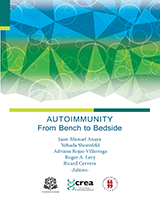Figure 9Sequence of physiopathological mechanisms in Sjögren’s syndrome development.
The pathogenetic mechanisms of this autoimmune epithelitis have not been fully elucidated. In genetically predisposed individuals, a trigger factor (most probably an epitheliotropic virus), activates the exocrine glands’ epithelium. This leads to the recruitment, activation and expansion of lymphocytes. Immunologically-activated or apoptotic glandular epithelial cells that expose autoantigens might drive autoimmune-mediated tissue injury. Alterations in several immune mediators, such as up-regulation of type I interferon-regulated genes, abnormal expression of B-cell-activating factor and activation of the interleukin-23–type 17 T-helper cell pathway, might play a role. Extension of the pathological process that affects the exocrine glands into periepithelial and extraepithelial tissue can cause a considerable percentage of patients to exhibit systemic findings. Histologically normal MSG biopsy is shown in frame A; in comparison, a MSG biopsy from a SS patient is depicted in frame B, which shows lymphocytic infiltrates in the central region of the lobule. Photomicrographs of the MSG biopsies: Goicovich et al. (207). Frame C is a normal salivary gland biopsy. Frames D, E, F and G are from a patient with SS. Frames F and G show high endothelial venules containing red blood cells and lymphocytes migrating into the gland. Ab: antibodies; AOD: age at onset of disease; APCs: antigen-presenting cells; AQP5: aquaporin 5; BAFF: B cell-activating factor; CXCR5: C-X-C chemokine receptor type 5; DCs: dendritic cells; EBV: Epstein-Barr virus; GEC: glandular epithelial cells; IRF: interferon regulatory factor; MMPs: matrix metalloproteinases; NO: nitric oxide; STAT4: signal transducer and activator of transcription 4; TIMPs: tissue inhibitors of metalloproteinases; TLRs: Toll-like receptors.
- Figure 9, Sequence of physiopathological mechanisms in Sjögren’s syndrome develo...Figure 9, Sequence of physiopathological mechanisms in Sjögren’s syndrome development. - Autoimmunity
- Tssr23105 AND (alive[prop]) (0)Gene
Your browsing activity is empty.
Activity recording is turned off.
See more...

